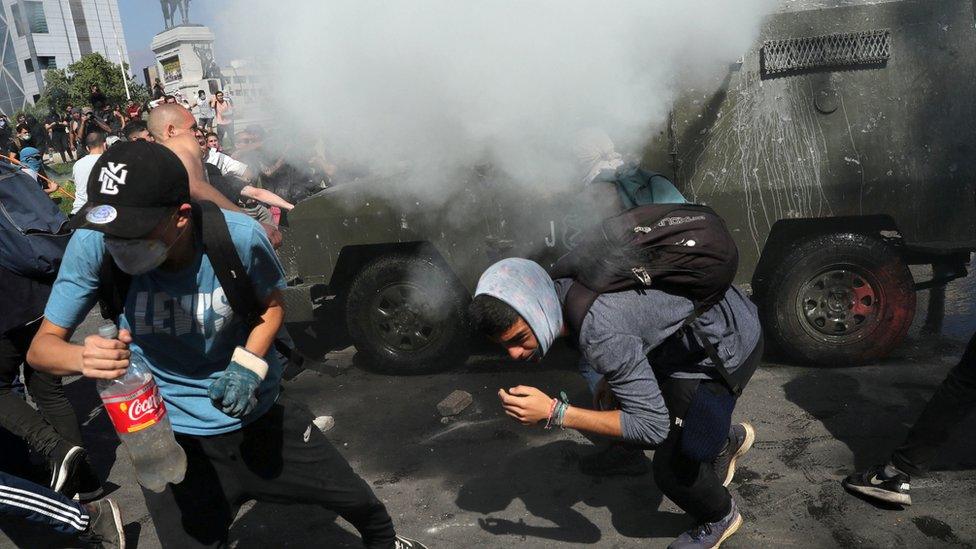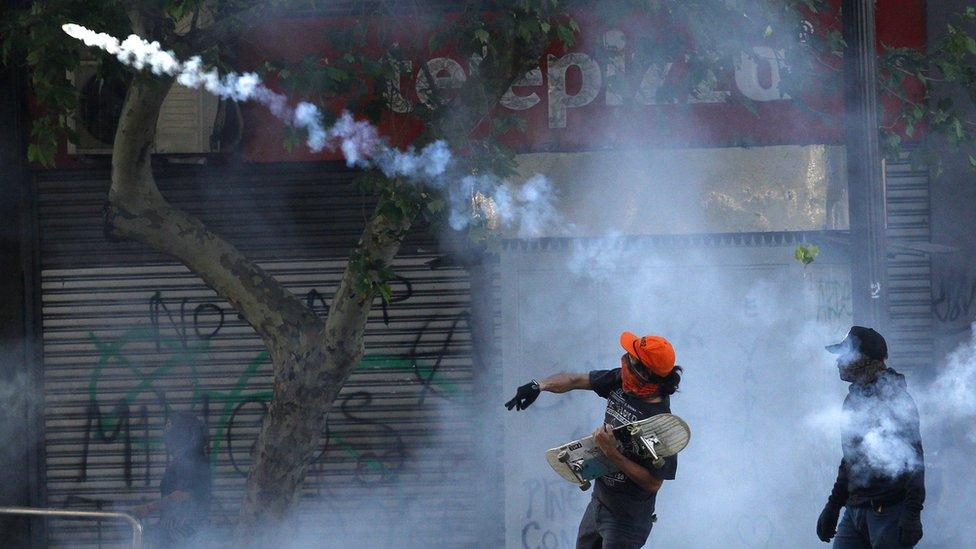Chile protests: Is inequality becoming worse?
- Published

A state of emergency is already in place in Santiago, the capital
Demonstrators across Chile have been expressing their anger at high levels of inequality and the cost of living.
So, we've taken a look at whether the difference between rich and poor in Chile is actually rising and how this inequality compares with other countries.
How unequal is Chile?
First, let's compare Chile's inequality with other countries.
We've looked at the Gini index, the most widely used international measure of inequality - for which the higher the number, the greater the inequality.
This shows Chile ranks as one of the most unequal country among a group of 30 of the world's wealthiest nations.

"It has been a highly unequal country for years," says Javier Sajuria, a senior lecturer in politics at Queen Mary University.
He says the data indicates inequality has actually been falling but possibly "not fast enough", which could in part explain the outpouring of anger.

Another way to consider inequality is by looking at the incomes of the richest and poorest.
In 2006, the richest 20% earned 10 times more than the poorest 20%, according to a government survey.
In 2017, that figure had fallen to 8.9 - indicating the income gap between rich and poor had in fact narrowed slightly.
"This isn't about political parties" one protestor, Constanza Gonzalez, told BBC News. "People are angry and this was a thing that had been coming for quite a long time."
What about poverty levels?
The Chilean government conducts a national household survey every two years and provides a measure of how many in the country are facing poverty.
This includes people who struggle to buy enough food to survive as well as those spending a large proportion of their family income on food.
These figures suggest a consistent and significant fall in poverty over the past decade.

Real wages (adjusted for inflation) have been increasing by about 4% over the last five years, according to government statistics.
The median (middle) monthly wage in 2018 was 400,000 Chilean pesos, about $550. Close to half the country earns this much.

The economic indicators we've looked at here suggest improving economic conditions for many in Chile over the past decade.
But it's also a country with one of the highest levels of inequality among the world's industrialised countries.


